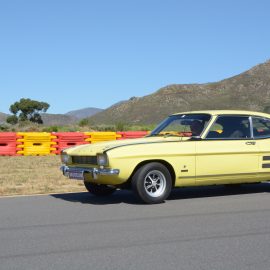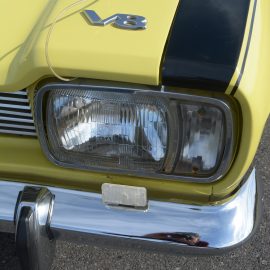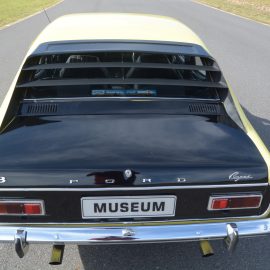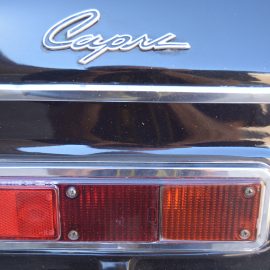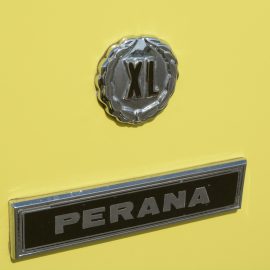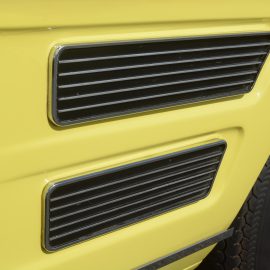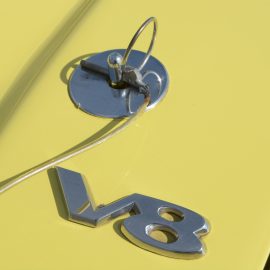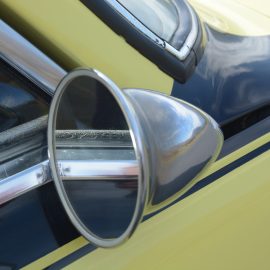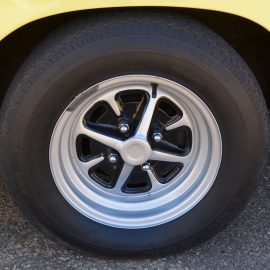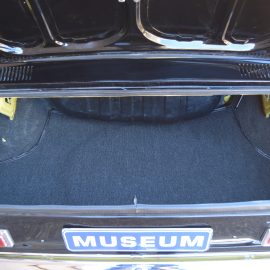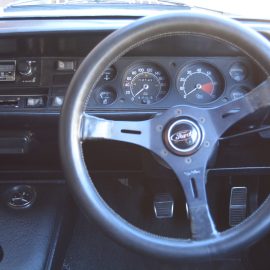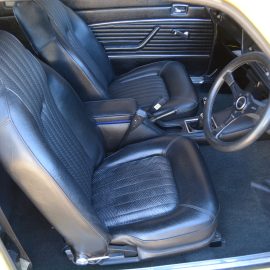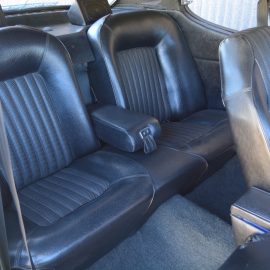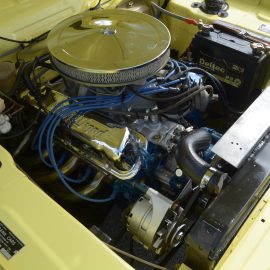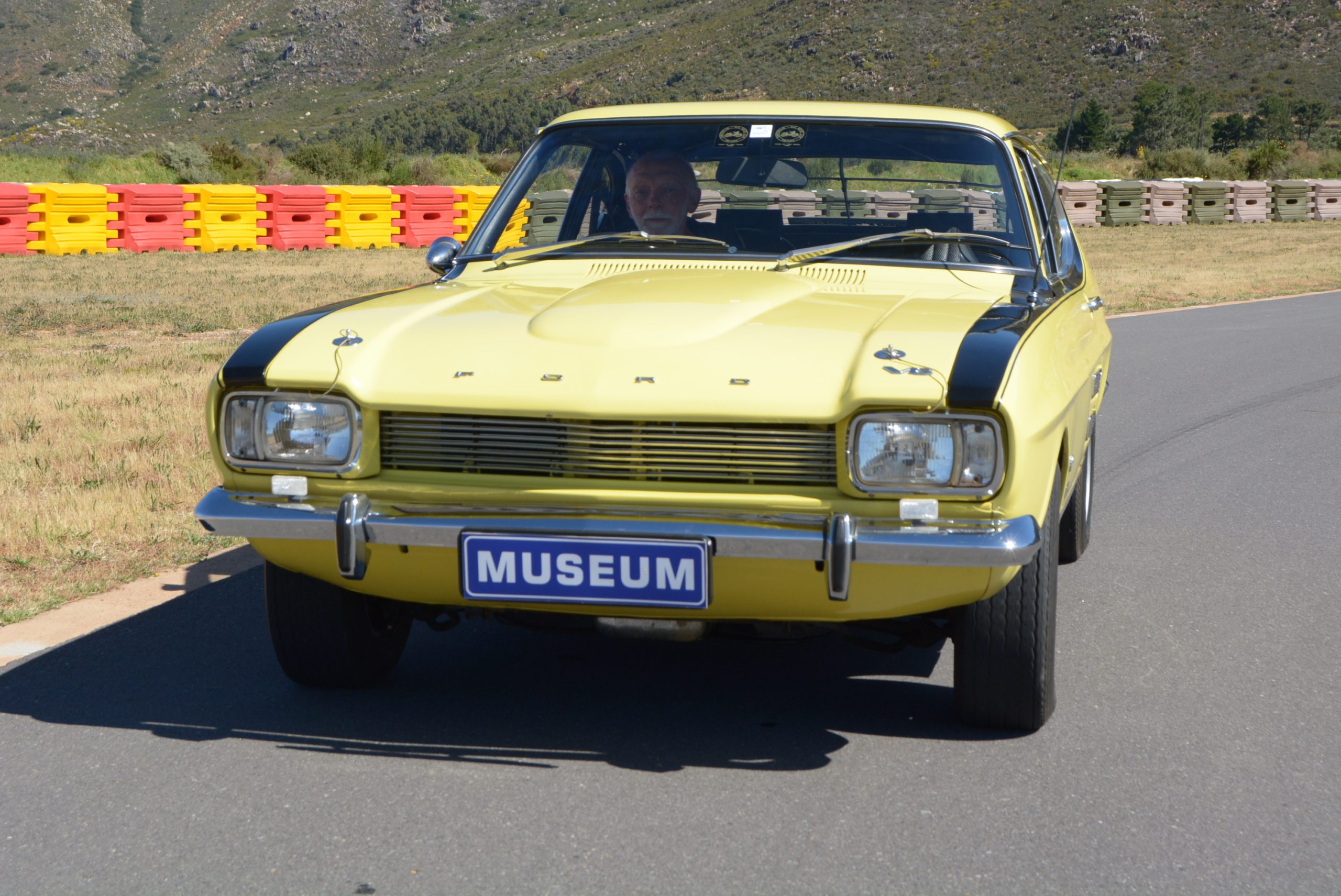
06 Aug Capri Perana – Smokin’ Domination
In motoring folklore, South Africa is notable for having developed and produced some rather special and unique motor cars over the years, generally with a sporting bent and almost all with a level of sophistication that characterised the engineering talent that existed in the country despite its isolation at the time. One such machine was the Capri Perana, a muscle car built out of Ford of Europe’s stylish new coupe. The Perana was the brainchild of Johannesburg garage owner and tuning specialist Basil Green and became one of only two independently manufactured cars ever built with the full blessing and back-up of Ford: the other was Carroll Shelby’s Cobra.
The Capri Perana project came about in the late 1960s when Ford SA was sponsoring Bobby Olthoff internationally with the Willment team. Locally, the company was running a Falcon but it was not performing so well and something more competitive was sought, especially with the knowledge that arch-rival General Motors SA was bringing in the powerful Holden Monaro too. By this time Green had successfully developed the Mk.2 Cortina Perana V6 both as a road and race car and had got to know Ford’s top brass through the Grosvenor Ford dealership, which was the main selling outlet for the Peranas. Ford asked Green to put something together and so he went to Port Elizabeth to discuss the options. The Capri – advertised as being ‘The car you’ve always promised yourself’ – had just been launched locally and Green measured it up and asked for some parts to build a prototype. Ford SA top brass Ron Scott and Spence Sterling enthusiastically backed Basil’s proposal and promised full financial backing.
Basil set up new premises in Plantation Road, Edenvale, and the prototype build to the then Group 5 regulations commenced using a load of parts from Ford’s GT40 Le Mans car. The right-hand drive steering rack had to be changed to accommodate the Gurney-Weslake 302ci (4 949 cc) V8 that was fitted with a high-rise manifold, four-barrel Holley and a BG camshaft and mated with Ford’s four-speed TopLoader gearbox. Together with the brakes and wheels, the front suspension was replaced with GT40 items. A 9-inch limited-slip diff was also fitted. With wheelarches flared and the bodywork painted in Team Gunston’s distinctive burnt orange with contrasting striping, X181 (the car’s allocated race number for the new season) was ready to do battle.
The outcome? Total domination! Olthoff and the Perana won the championship by winning 12 of the 1970 season’s 13 races with the single failure being a DNF due to a broken crankshaft. The stage was set but either by coincidence or design, for 1971 the racing rules were changed to the more production-based Group 2 formula. But the Perana remained dominant in the hands of Koos Swanepoel, Basil van Rooyen, Peter Gough and Olthoff, who took the 1971 title as well. The ‘works’ Team Gunston cars featured unique, C-shaped rear leaf springs that allowed the wide (14,5 inch) Gp.5 wheels and tyres to be fitted within the narrower wheelarch flares prescribed by the Gp.2 regulations, a ‘bending’ of the rules that irked the privateers (especially Van Rooyen) but was deemed legal by race scrutineers.
Road-going Capri Peranas (based on the 3000XL) were South Africa’s No.1 muscle car of the ’70s. In standard form the V8 pumped out 150 kW but there were 186 kW and 220 kW (at 5 800 r/min) versions, the latter with around 270 N.m of torque at 3 500 r/min that helped realise a 0-100 km/h sprint time of 6,7 seconds and a top speed just shy of 230 km/h. Sitting on 38 mm lowered suspension with stiffer springs up front, the Capri Perana rode and handled extremely well. Only the standard brakes with harder pads were suspect, being prone to fade quickly with hard use.
Piloting the FMM’s standard yellow-and-black 220 kW road car (complete with Perana’s signature rear window louvre unashamedly cribbed from the Lamborghini Miura), its period ‘performance pony’ personality was immediate. Ample torque helped deliver effortless progress – on the dry parts of the road – Cape winters are WET!. Cornering required a slow in/quick out approach to counter the inherent understeer, although squeezing the accelerator helped bring the tail around. The unassisted steering is weighty without being heavy. It sounds good, too, the twin exhausts emitting a throaty rumble that rose in unison with rev-counter needle. I opted not to put the Perana’s suspect braking ability to the test…
Perhaps the most famous of South Africa’s home-brewed performance cars, the Capri Perana was synonymous with Team Gunston and became an instant icon. FMM’s example recently underwent a thorough check-over and is now in pristine condition. It is currently on display in Hall C.




